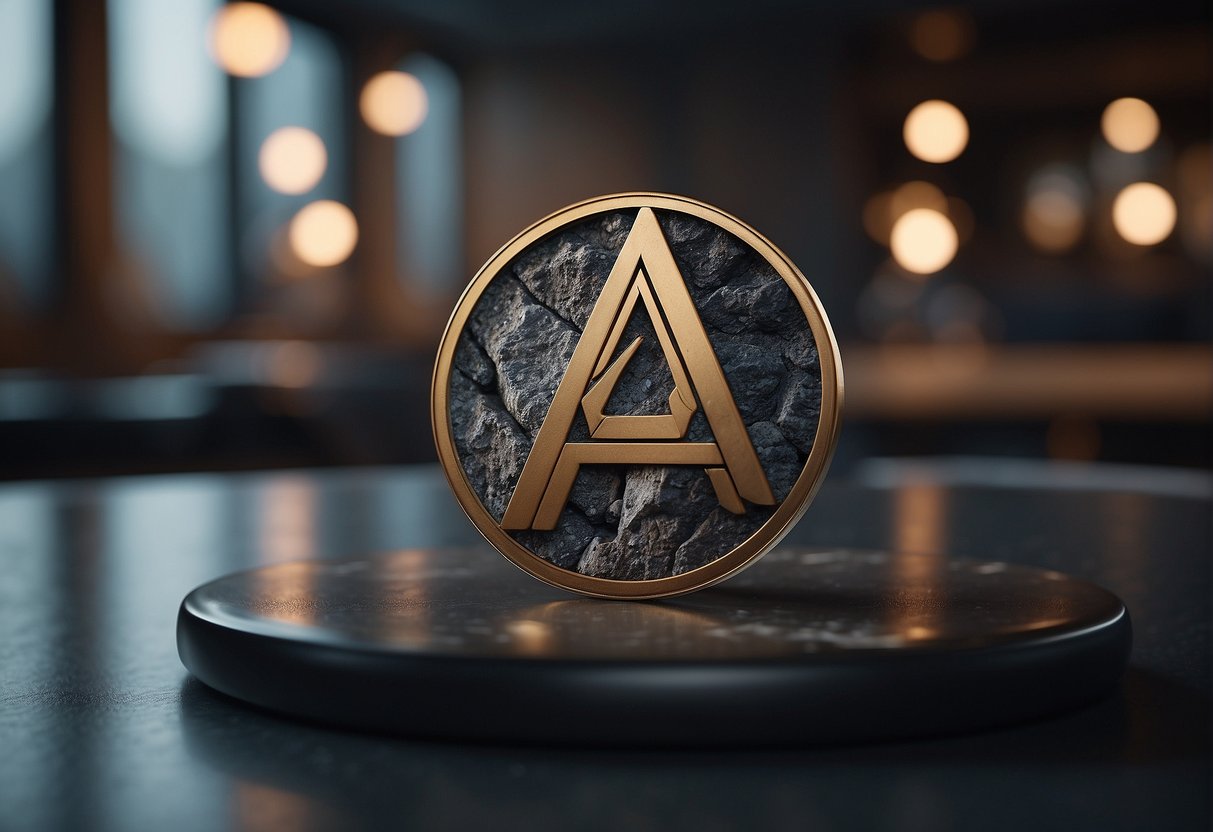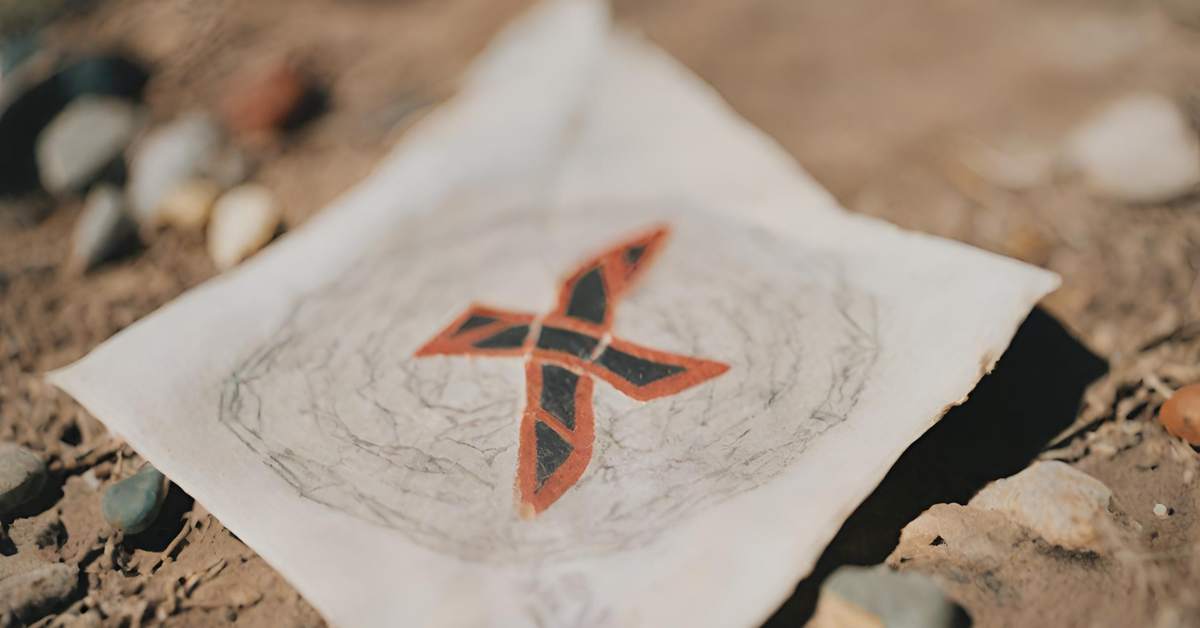The Othala rune is a symbol steeped in history, carrying a heritage that reaches back to the ancient Germanic peoples. Have you ever wondered about the deeper meanings behind this intriguing character?
This powerful rune is not just a simple glyph; it encapsulates complex concepts of ancestry, inheritance, and connection to the land. It’s part of the Elder Futhark, the oldest form of the runic alphabets used by Germanic tribes, serving as both a letter and a signifier of wealth and established property.

Beyond its historical significance, the Othala rune has been interpreted and used in various ways throughout the ages. It may pique your interest to know that its uses extend into mysticism, including practices like rune casting for divination and as a talisman for protection and success. In contemporary culture, the Othala rune has been adopted by various groups with diverse interpretations, marking it as a symbol that transcends time but also one that requires careful consideration of its connotations and historical baggage.
Key Takeaways
- The Othala rune represents heritage, property, and ancestral connection.
- It has diverse uses, ranging from divination practices to symbolic meanings in modern culture.
- Understanding the Othala rune’s context and history is crucial in its modern interpretation.
Othala Rune Overview
https://www.youtube.com/watch?v=YWugh3kAgWE&embed=true
Diving into the Othala Rune, you’ll uncover a symbol steeped in history, brimming with meaning, and a quintessential part of the Elder Futhark. Ready to see what stories and secrets it holds?
Historical Context
Did you know the Othala Rune is a member of the Elder Futhark, the earliest form of the runic alphabet? It’s got roots that reach back to the 2nd to 8th centuries, hailing from Europe where the Proto-Germanic language was all the rage. Think of it as a piece of the ancient European tweet: back then, if you had something to say, carving runes was the way to go. Inscribed on wood, metal, or stone, this symbol was part of a language that reveals a lot about the Germanic people’s world – from their daily grind to their mystical musings.
Visual Representation
Picture this: a simple geometric design that looks somewhat like an enclosure or a traditional estate, which is actually what the Othala Rune represents. Its design is no random doodle; it’s loaded with a sense of heritage, ancestry, and ownership. Visually, it’s akin to a pair of square brackets embracing a rooftop – a nod to home, inheritance, and everything ‘ancestral’. In Old Norse language, the term othal signified inherited land or estate, which neatly ties into the rune’s design. It’s the final symbol in the Elder Futhark, almost like the period at the end of a captivating story, but here it symbolizes a legacy that endures beyond the tale’s end.
Symbolic Meanings
https://www.youtube.com/watch?v=8CMo08ejut0&embed=true
When you hear “Othala Rune,” think heritage and home. It’s a powerful symbol from the Norse tradition that goes way beyond a simple drawing. Let’s dive in and unravel the layers.
Ancestry and Family
The Othala rune often represents family and ancestry. It’s the ancestral estate that has been handed down through generations—kind of like your Grandma’s secret recipe, but for property and family values. It’s about where you come from and the tapestry of relationships that define who you are.
Home and Land
Talking about home and land, Othala is your go-to symbol. Imagine it as the emblem on the gate to your family’s homestead or a tattoo that says, “Home is where the heart is.” It’s all about the connection to the land you call home and the sense of belonging to a place.
Wealth and Inheritance
Next up, wealth and inheritance. But hold on, it’s not just about cold, hard cash. Othala covers the whole spectrum of what’s passed down, from your great-grandfather’s watch to the wisdom of generations. It’s the treasure chest of family wealth, tangible or otherwise.
Cultural and Spiritual Significance
Lastly, let’s touch on the cultural and spiritual significance. Othala isn’t just a private matter; it reflects a broader cultural identity and spiritual heritage. Think of it as a thread in the grand tapestry of Norse tradition, weaving together symbols, stories, and rituals that have been around longer than the oldest oak tree in the forest.
Remember, Othala is not just a marking etched in stone; it’s a whisper of the past, a guide for the present, and a legacy for the future.
Rune Usage in Practices

Did you know the ancient art of using runes extends far beyond what you might find in pop culture? It’s a rich tradition full of depth and history. Let’s dive into how the Othala rune and others from the Elder Futhark are applied in practices like divination and magic today.
Rune Readings and Divination
Rune reading is a fascinating form of divination that taps into your intuitive understanding. It involves casting runes, which are the letters of the runic alphabet, to gain insights into various life situations. Specifically, the Othala rune, part of the ancient Elder Futhark script, symbolizes heritage and home, carrying profound meanings of protection and belonging. When you’re doing a rune reading, think of Othala as a guiding force reconnecting you with your roots and guarding your personal sphere.
Runic Magic and Rituals
Magic, you say? Absolutely! Runes are more than just symbols; they’re believed to be potent tools for magic and rituals. Within runic magic, each rune, such as Tyr, the rune of justice and leadership, is associated with specific energies and can be used in practices for invoking those energies. By combining runes like Othala and Tyr in various layouts or inscribing them onto objects, practitioners aim to manifest desires such as property protection or leadership strength. The craft of runic magic is a blend of art and intention—each stroke of the rune is a step closer to weaving the magic into reality.
Modern Interpretations and Use
Runic symbols hold an intriguing place in today’s culture, intertwining ancient traditions with modern interpretations. Let’s take a look at how the Othala rune, in particular, has been understood and utilized in contemporary settings.

Cultural Impact
The Othala rune, originally a part of Norse mythology, is steeped in meanings associated with heritage and identity. For many, it represents a connection to ancestral roots and cultural values. To this end, it’s often adopted by those with an interest in Norse traditions and practices. In modern interpretation, the symbol acts as a bridge between the past and current expressions of identity, drawing on the rich tapestry of Norse myths and stories.
Controversial Usage
However, did you know that the Othala rune has a more troublesome side to its legacy? It’s not exactly a joke when we say that symbols can be co-opted for entirely different agendas. The Othala rune was misappropriated by the Nazi party, and today, neo-Nazi groups have also used this symbol, sparking significant controversy. The rune itself is not inherently hateful, but its incorporation as a symbol by extremists has cast a long shadow over its usage. This has led to a complex dual-nature, where understanding the Othala rune requires acknowledging its association with both ancient Norse mythology and its misapplication as a modern hate symbol akin to the swastika.
The Rune in Contemporary Culture

The Othala rune has transitioned from ancient texts to a vivid representation of heritage and identity in modern times. Let’s see how it’s etched its way into our lives, from literature to personal adornments.
In Literature and Media
Have you spotted the Othala rune in your favorite fantasy novel? It’s no secret that runes, Othala included, often sneak into the pages of books, weaving their ancient magic into narratives. The Othala rune symbolizes home, family, and ancestry, making it a fitting emblem for stories that explore themes of belonging and identity. In movies and television, these runes add an authentic touch of mystique, tracing back to our collective past.
In Jewelry and Art
Now, let’s talk bling and brushstrokes. Artists and jewelers draw inspiration from the deep well of symbolism associated with runes. Othala, for instance, encapsulates a sense of connection to one’s lineage. It’s not uncommon to find beautifully crafted rings and necklaces that celebrate this heritage. These pieces serve not just as fashion statements but as personal amulets linking wearers to their ancestry, a shining nod to the legacy left behind by their forebearers. And on canvases and murals? Othala represents a bridge between ancient symbols and modern culture, often portrayed in art that seeks to question our place in the world today.
Frequently Asked Questions

Exploring the Othala rune reveals a treasure trove of insights into Norse tradition and heritage. Let’s dive into some common questions that might be crossing your mind about this enigmatic symbol.
What does the Othala rune symbolize in Norse spirituality?
In Norse spirituality, the Othala rune is a symbol of heritage and inherited property. It’s like a spiritual heirloom, representing the connection to your ancestors and the legacy they have passed down to you.
How is the Othala rune connected to the concept of heritage and ancestry?
The Othala rune is intimately connected to one’s heritage—it’s the metaphysical embodiment of what you’ve received from past generations, from your family & ancestors. This includes not just material possessions but also intangible qualities like wisdom and family traditions.
In what ways can the Othala rune be interpreted when found in a reversed position?
When reversed, the Othala rune can suggest a break or upheaval in the realm of heritage—it may imply the loss of inheritance or a need to separate from one’s traditional bonds to forge your own path.
What meanings are associated with the Othala rune when used in tattoos?
In tattoos, the Othala rune often conveys a strong connection to one’s roots and ancestry. However, please be mindful of its complex history; it’s wise to fully understand its meanings and connotations before inking it on your skin.
How might the energy of love be expressed through the Othala rune?
The energy of love through Othala may reflect a deep love for one’s home and kin, a nurturing of familial bonds, and the embrace of one’s cultural legacy.
Can the Othala rune be linked to a specific Norse deity?
While the Othala rune isn’t directly linked to a specific Norse deity, it exudes a sense of Odin’s wisdom, particularly in connection with cultural heritage and the wisdom of the elders.






